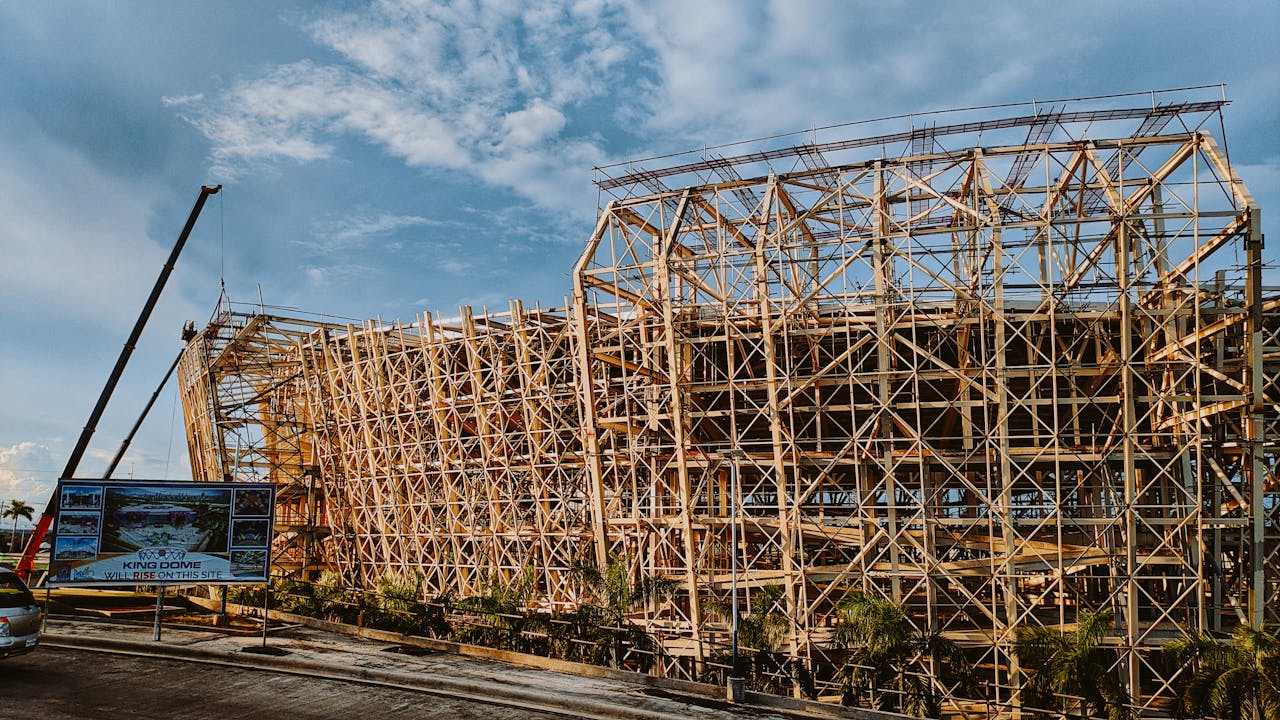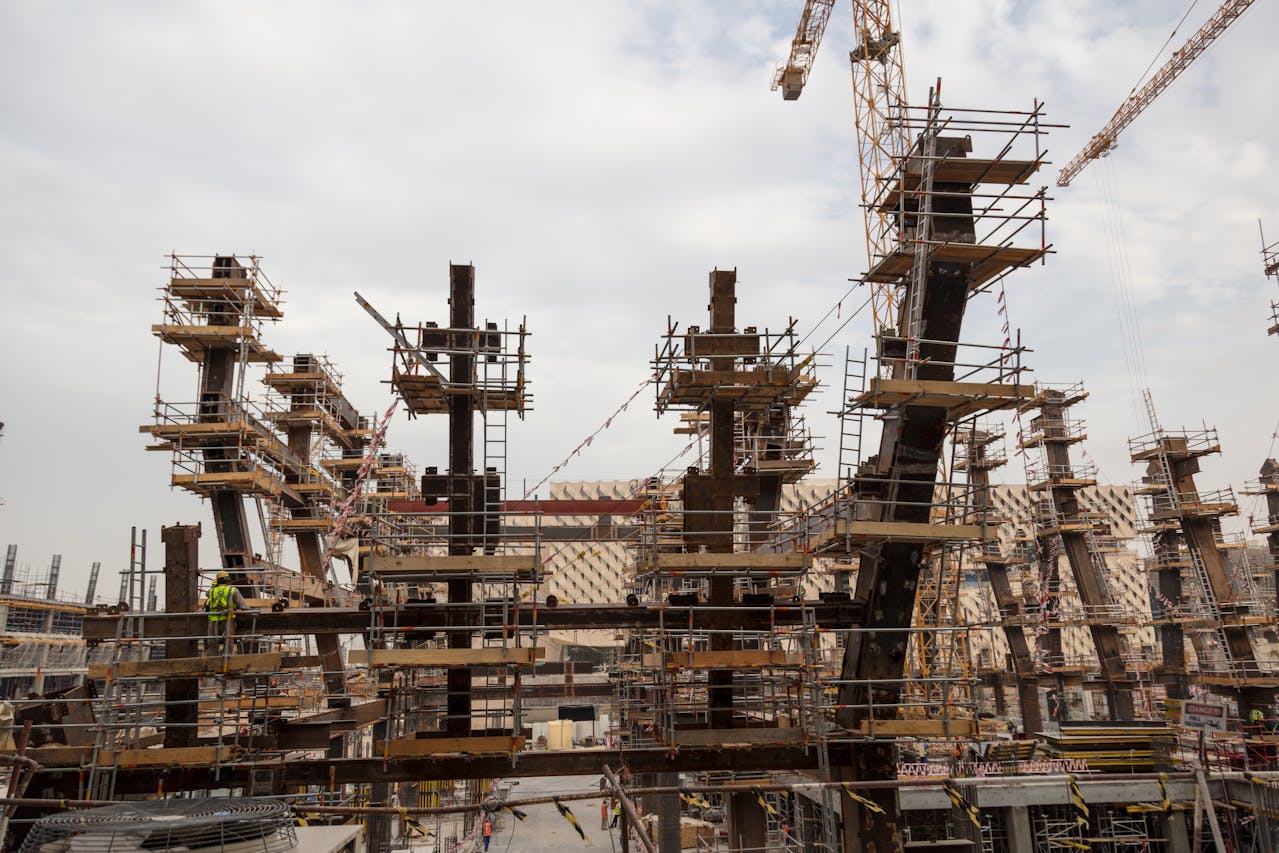Understanding Steel Standards and Compliance in Australia

Steel standards play a crucial role in the construction industry in Australia, ensuring that structural steel used in buildings and infrastructure meets specific quality and safety benchmarks. This blog post aims to provide an authoritative resource on Australian steel standards, emphasising their importance, key regulations, and compliance practices.
What Are Australian Steel Standards?
Australian steel standards establish the requirements for quality, safety, and performance of steel used in construction. They help ensure the steel used is durable and suitable for Australian conditions. This is crucial for maintaining safety, as compliant steel provides structural integrity to buildings and other construction projects. For any structure to be safe and durable, it is critical to comply with Australia’s structural steel standards.
Standards Australia, an independent, non-profit organisation that collaborates with industry stakeholders, government bodies, and experts, primarily developed the standards. Additionally, international standards organisations, such as the International Organization for Standardization (ISO), contribute to developing these standards, ensuring that they align with global best practices while catering to local requirements.
The Role of the National Construction Code (NCC)
The National Construction Code (NCC) is an overarching document that sets out the minimum requirements for safety, health, and sustainability in Australian construction. It incorporates references to key Australian steel standards to guide the proper use of structural steel in various construction projects. By adhering to the NCC, builders and fabricators ensure they meet Australian steel structure standards.
Key Standards and Compliance for Structural Steel in Australia

Understanding the primary standards that govern structural steel in Australia is critical for fabricators and builders to ensure steel compliance in Australia. Here are the essential standards:
AS/NZS 1163
AS/NZS 1163 specifies the requirements for cold-formed, structural steel hollow sections used in construction. These sections are essential for lightweight steel structures and piping systems, ensuring the steel meets the required Australian standards for steel structures.
AS/NZS 1252
AS/NZS 1252 defines specifications for high-strength steel bolts used in structural applications. These bolts are crucial for connecting structural steel elements safely and securely. Meeting these standards ensures that builders and fabricators comply with Australia’s steel standards.
AS/NZS 1554
AS/NZS 1554 focuses on welding steel structures, providing guidelines for fabrication and testing processes. Compliance with this standard ensures that structural steel is welded correctly and meets the necessary performance criteria for strength and durability.
The Role of Steelwork Compliance in Australia
Steelwork Compliance Australia (SCA) plays a pivotal role in ensuring Australia’s steel compliance. By certifying compliance with Australian steel standards, the SCA ensures fabricators meet the stringent requirements set forth by the NCC.
The SCA offers a range of auditing and certification services that assure builders and developers of the quality of structural steel used. These services help stakeholders navigate the complex landscape of Australian standards for steel structures and guarantee the use of compliant steel materials.
Importance of Compliance in Steel Standards and Compliance in Australia

Ensuring Safety
Compliance with Australian steel standards is crucial to ensuring buildings’ and infrastructure’s safety and structural integrity. Using steel that meets Australian standards ensures the structures can withstand various stresses and loads, safeguarding the lives of people using them.
Durability and Longevity
Adhering to Australian standards for steel structures guarantees that the steel used in construction projects will withstand environmental stresses like corrosion and extreme weather. This compliance significantly enhances the structure’s lifespan, ensuring durability and long-term reliability.
Project Liability and Insurance
Using compliant structural steel helps builders and fabricators avoid legal complications. Projects using non-compliant steel often face significant legal issues and insurance hurdles, as they need to meet the requirements of Australian structural steel standards. Adhering to steel standards in Australia ensures smoother project execution and provides builders with peace of mind.
Risks of Non-Compliance
Structural Failures
The risk of structural failures increases significantly when non-compliant steel is used. This compromises the structure’s safety and integrity and seriously risks lives and property. Complying with structural steel standards in Australia is imperative to prevent such failures.
Legal Repercussions
Non-compliance with Australian steel standards can lead to severe legal repercussions, including hefty fines and potential lawsuits. Builders and developers must pay more attention to steel compliance in Australia.
Insurance Claims Denial
Insurance companies often deny claims on projects that utilise non-compliant steel, leaving builders and developers to shoulder the financial burden. Ensuring compliance with Australian standards for steel structures is critical to secure insurance coverage and avoid the costs associated with rejected claims.
Challenges and Solutions for Steel Standards and Compliance in Australia Issues Faced by Fabricators and Builders

Complex Compliance Requirements
Navigating the complex landscape of steel standards in Australia can be challenging. The many regulations and standards fabricators and builders must adhere to can make steel compliance in Australia an overwhelming process.
Counterfeit Products
Counterfeit steel products occasionally infiltrate the market, and these products do not meet the required Australian steel standards. Using counterfeit steel can lead to significant risks, including compromising the integrity of structures.
Supply Chain Issues
Ensuring a reliable supply of compliant steel can take time due to global market fluctuations and disruptions in the supply chain. Builders and fabricators often face challenges in sourcing structural steel that adheres to Australian standards for steel structures.
Solutions Provided by Standards and Compliance Organizations
Simplified Compliance Guidance
Organisations like Standards Australia and Steelwork Compliance Australia (SCA) offer clear and simplified guidelines to assist fabricators and builders in navigating steel standards in Australia. This guidance makes it easier for them to comply with regulations.
Certification and Traceability
Certified suppliers provide products that meet Australian structural steel standards and offer traceability. This certification reduces the risk of counterfeit steel entering the supply chain and assures builders of the quality and compliance of their materials.
Supply Chain Management
Maintaining relationships with reputable suppliers and understanding the supply chain helps ensure consistent access to compliant steel. Engaging with trusted suppliers can reduce delays and ensure that builders receive materials that meet steel compliance in Australia.
Best Practices in Structural Steel Fabrication
Inspection and Testing
Regular inspections and testing are essential to ensure steel products meet the standards set by structural steel standards in Australia. This practice helps identify potential issues early and maintains compliance.
Documentation and Record-Keeping
Maintaining accurate documentation and records is crucial for tracking compliance and facilitating audits. This practice helps builders demonstrate adherence to Australian steel standards.
Qualified Personnel
Employing certified personnel ensures fabrication processes align with best practices. Proper training in Australian standards for steel structures allows fabricators to execute projects correctly and compliantly.
Recommendations for Choosing the Right Materials and Processes

Source from Certified Suppliers
Sourcing materials from certified suppliers ensures the steel used complies with Australian standards. Certified suppliers also provide traceable products that can be verified.
Quality Control Procedures
Implementing robust quality control procedures allows for early identification of defects in steel products, preventing them from being used in projects and compromising compliance.
Continuous Training
Investing in staff training keeps personnel updated on the latest standards and techniques in structural steel fabrication. This continuous education ensures that teams understand and can implement Australia’s latest requirements for steel compliance.
Conclusion
Adhering to steel standards and compliance requirements is essential for ensuring the safety, durability, and legal compliance of construction projects in Australia. By understanding and following these guidelines, professionals in the construction industry can ensure that their projects are structurally sound and meet the highest quality standards.
Cedar Steel stands ready to partner with you to deliver compliant structural steel for your construction projects. With a commitment to quality and compliance, Cedar Steel provides certified materials that adhere to the stringent Australian standards for steel structures. Choose Cedar Steel to ensure your next project is compliant and built to last.
FAQs
What are the main standards governing structural steel in Australia?
The primary standards include AS/NZS 1163, AS/NZS 1252, and AS/NZS 1554, each outlining specific requirements for different steel types and uses.
Why is compliance with these standards crucial for construction projects?
Compliance ensures the safety, durability, and legal adherence of buildings and infrastructure, reducing risks associated with non-compliant steel.
How can builders ensure they use compliant structural steel in their projects?
Builders should source steel from certified suppliers, conduct regular inspections, and ensure their personnel are well-trained in compliance standards.

